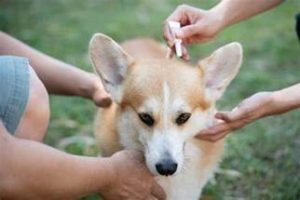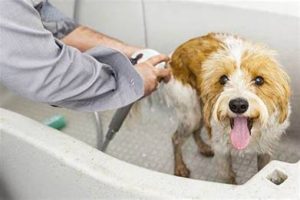
As the flowers bloom and the temperatures rise, spring brings a welcome change for people and pets alike. But while your dog may be thrilled to return to long walks and your cat enjoys sunny windowsills again, there’s a hidden downside to spring’s arrival: parasites!
Fleas, ticks, and mosquitoes begin to emerge in force during the spring months, posing real risks to your pet’s health. Knowing what to watch for and how to protect your furry friend is key to enjoying the season safely.
Why Spring Sparks Parasite Season

Spring’s warm, damp conditions are ideal for parasites to breed and spread. After lying dormant during the colder months, fleas and ticks start reactivating in March and April, while mosquito populations begin to rise with the first warm rains. Even just a few warm days in a row can trigger a parasite population boom.
Here’s a quick breakdown of the most common springtime parasites:
Fleas

- Thrive in temperatures above 65°F.
- Can infest pets and homes quickly, especially in multi-pet households.
- Cause itching, skin infections, and can transmit tapeworms.
Ticks

- Found in grassy, wooded, or even urban garden areas.
- Can spread diseases like Lyme disease, Rocky Mountain spotted fever, and ehrlichiosis.
- Often go unnoticed due to their small size, especially on pets with thick fur.
Mosquitoes

- Breed in standing water, including puddles, birdbaths, and clogged gutters.
- Known carriers of heartworm, a serious and potentially fatal disease for dogs and cats.
How to Protect Your Pet This Spring

A proactive approach is your best defense. Here are some essential tips to keep your pet parasite-free this spring:
✅ Start (or Continue) Preventative Medications

Your vet can recommend flea, tick, and heartworm preventatives that suit your pet’s age, health, and lifestyle. Many treatments are monthly and work best when used consistently year-round, but spring is the most important time to get back on track if you’ve taken a winter break.
✅ Perform Regular Checks

After walks or time outdoors, check your dog(s) for ticks. Pay close attention to areas like:
- Behind the ears
- Under the collar
- Between the toes
- Around the tail and groin
Fleas are harder to spot but leave behind “flea dirt”—tiny black specks in your pet’s fur.
✅ Keep the Yard Tidy

Regularly mow your lawn, remove leaf piles, and eliminate standing water to reduce the habitat for fleas, ticks, and mosquitoes.
✅ Bathe and Groom Regularly

Bathing helps you spot fleas and ticks early. Brushing also allows you to inspect your pet’s skin and coat closely.
How a Pet Sitter Can Help
If you’re planning spring travel, or just working longer hours, a professional pet sitter can play a crucial role in parasite prevention. A trained sitter will:
- Watch for signs of scratching, swelling, or discomfort
- Administer preventative treatments as directed
- Keep bedding and food areas clean
- Monitor your pet’s health while you’re away

At Passionately Pets we take parasite prevention seriously, especially during high-risk seasons like spring. We’ll help make sure your pet is safe, comfortable, and cared for—so you can enjoy the season with peace of mind.
Protect Your Pet This Spring—Book Early!
Spring is a busy time for travel and parasite activity. Reach out today to schedule your pet care and ensure your furry friends stay happy and healthy all season long.




Leave a Reply